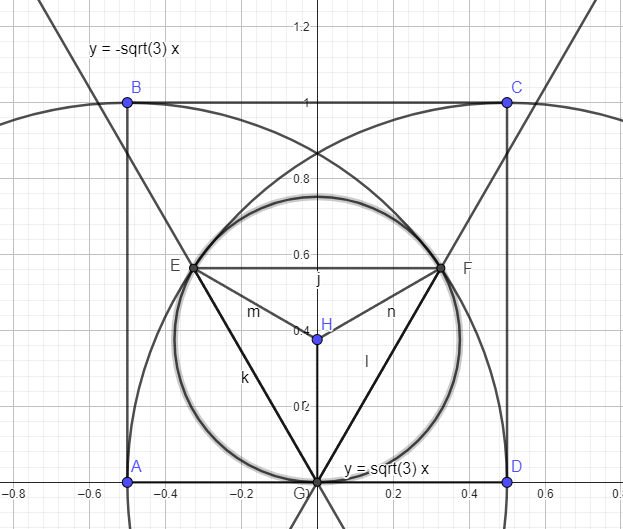
Let the intersection of the circle with the bottom edge of the square = ( 0 , 0) = G
Through this point draw lines y = -sqrt (3) x and y = sqrt (3) x
We can show that this will lead to the (approximate) radius of the circle
The equation of one circle is (x-.5)^2 + y^2 =1
And the intersection of this cirlce with the line y =sqrt (3) x can be found as
(x -.5)^2 + (sqrt (3) * x)^2 =1
Solving this for (x,y) produces ≈ (.3256 , .5641) = F
And using symmetry the intersection of the other circle with the line y = -sqrt (3) x is
(-.3256 , .5641) = E
The distance between these points is 2 (.3256) ≈ .651 = EF
And the distance between one of these intersection points and the intersection of the circle with the bottom of the square = sqrt [ (.3256)^2 + (.5641)^2 ] ≈ .651 = EG = FG
So we have an iinscribed equilateral triangle in the circle with sides ≈ .651
Angle EGF = 60° so angle EHF =120°
Using the Law of Cosines, we can find the (approximate) radius of the circle as follows
.651^2 = 2* r^2 - 2*(r^2) cos (120°)
.651^2 = 2r^2 - 2r^2 (-1/2)
.651^2 = 3r^2
r^2 = .651^2 / 3
r = sqrt [ .651^2 / 3 ] ≈ .3759
I'm sure that someone else may be able to give a more precise answer !!!!


